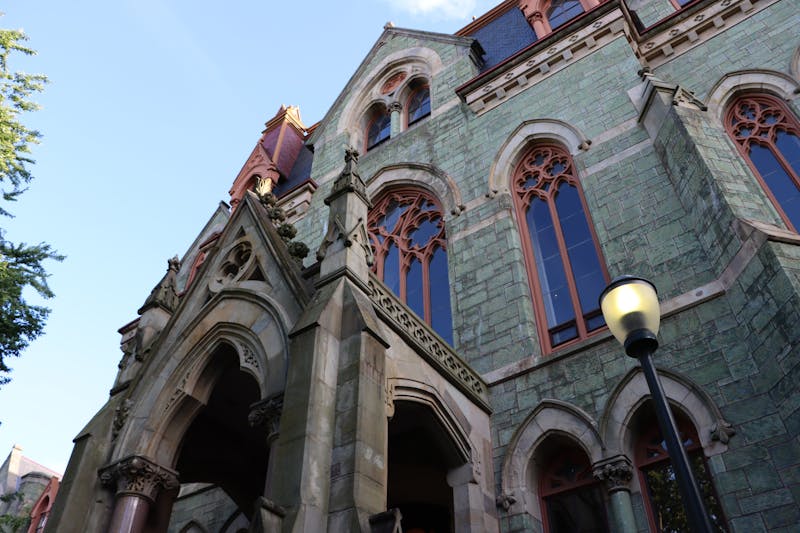
Two graduate students in the School of Design have created a model of what would happen to Manhattan if rising sea levels flooded the city.
If The Day After Tomorrow really does come, two graduate students in Penn’s School of Design have a plan they hope will save flooding cities around the world.
Tingwei Xu and Xie Zhang recently completed a project as part of Design School professor Ferda Kolatan’s studio class, in which he required the students to provide an architectural vision that would address rising water levels.
Xu and Zhang’s plan focused on installing waterproof canopies to the lower stories of skyscrapers, a scheme that aims both to prevent flooding and offer protection to buildings.
“Sea levels in Manhattan are increasing year after year, a phenomenon that will become a grave complication in about 100 years,” Zhang said.
According to Xu, human activities are contributing to the global rise in sea levels, an incidence that will pose a severe threat to buildings’ infrastructure in the future.
“Our proposal addresses the direct penetration of sea water into buildings and the corrosion that results from it,” Xu said.
“Hurricanes and other natural disasters could also increase the danger of flooding,” Zhang added.
Although this might not seem like a pressing issue for others, Xu and Zhang believe it is important to think ahead of time and prepare in advance before it may be too late.
Xu and Zhang claim their idea incorporates the concept of “irreducible integrity,” because the canopies have multiple functions. The canopies would not only inhibit water from coming in, but would also provide additional structural support, agricultural space and more working areas.
“The intelligent components of the surface have the ability to adapt to the environment. They can expand and contract based on changing weather conditions and that is what makes the design so intricate,” Xu explained.
The surface of the structure would surround the target buildings like a “skirt” and each one would be able to grow to the rising water level accordingly.
“Each component can also be controlled to be open or closed,” Zhang added.
While there are no plans with regard to the construction methods, Kolatan believes the design itself is visually and formally compelling.
It is successful because it delivers a conceptual frame for an elevated cityscape, Kolatan said.
“The concept itself is very feasible and an important part is that it doesn’t aim to prevent the disaster but engages in addressing the consequences in a proactive fashion,” Kolatan said.
“Our project shows how people and nature can coexist in a harmonious way and it represents a new generation of architecture, one that is in tune with Earth’s changing environments,” Xu said.
The Daily Pennsylvanian is an independent, student-run newspaper. Please consider making a donation to support the coverage that shapes the University. Your generosity ensures a future of strong journalism at Penn.
DonatePlease note All comments are eligible for publication in The Daily Pennsylvanian.







